by Dr. Anand Titus and Geeta N. Pereira
The great or common Coucal is commonly referred to as the crow pheasant in India.
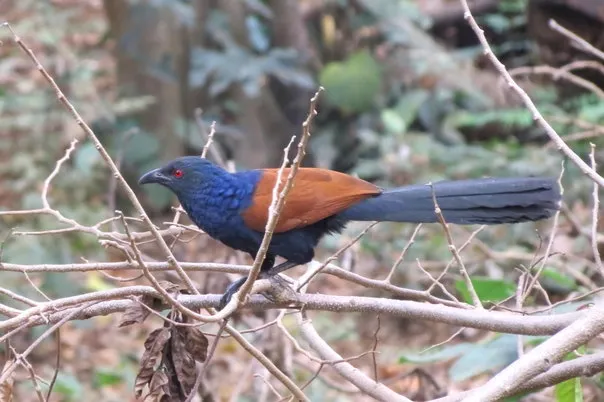
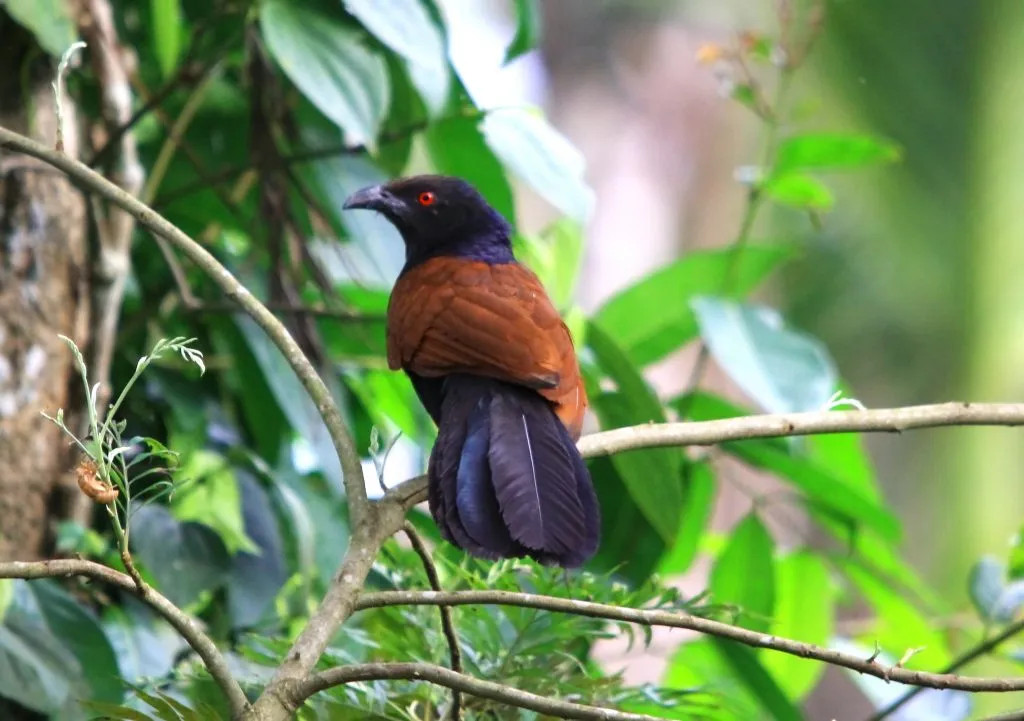
Even though, it is present in different coffee Agro Climatic conditions, it is difficult to spot the bird because it is extremely shy of humans.
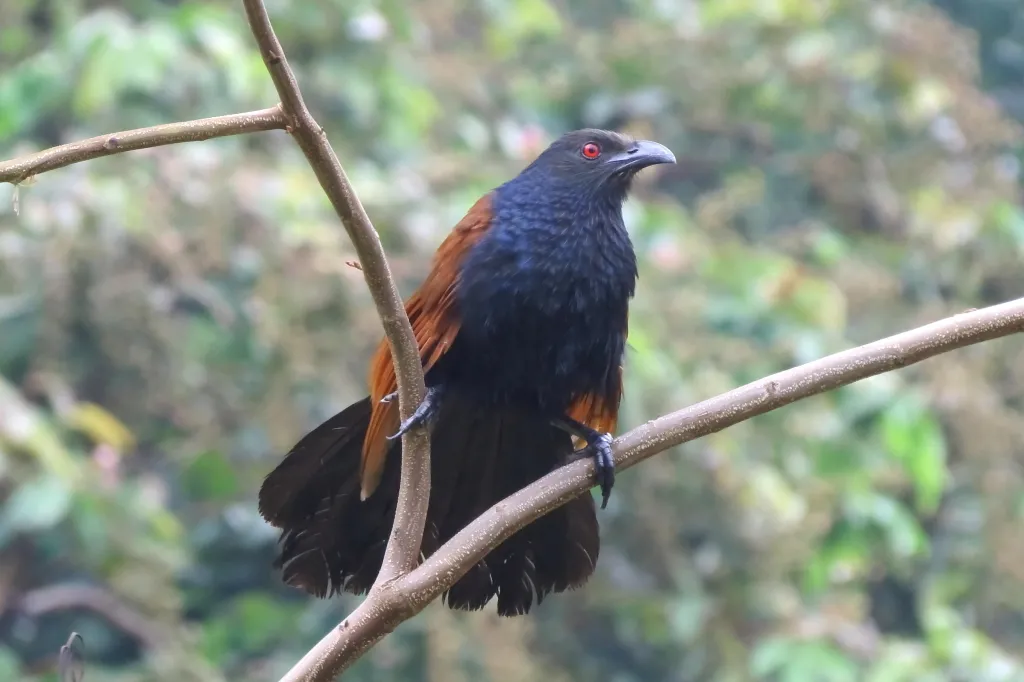
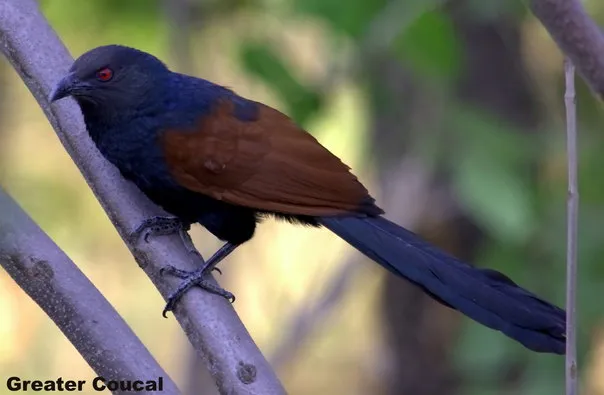
Other Common Names
Common Coucal, Large Coucal, Common Crow-pheasant, Lark-heeled Cuckoo
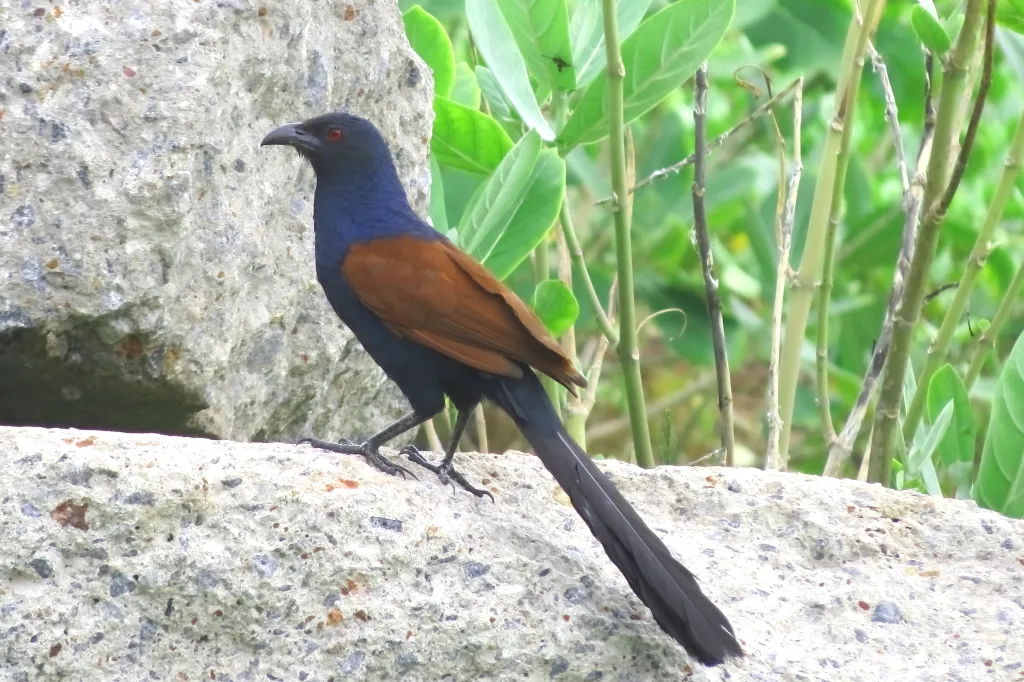
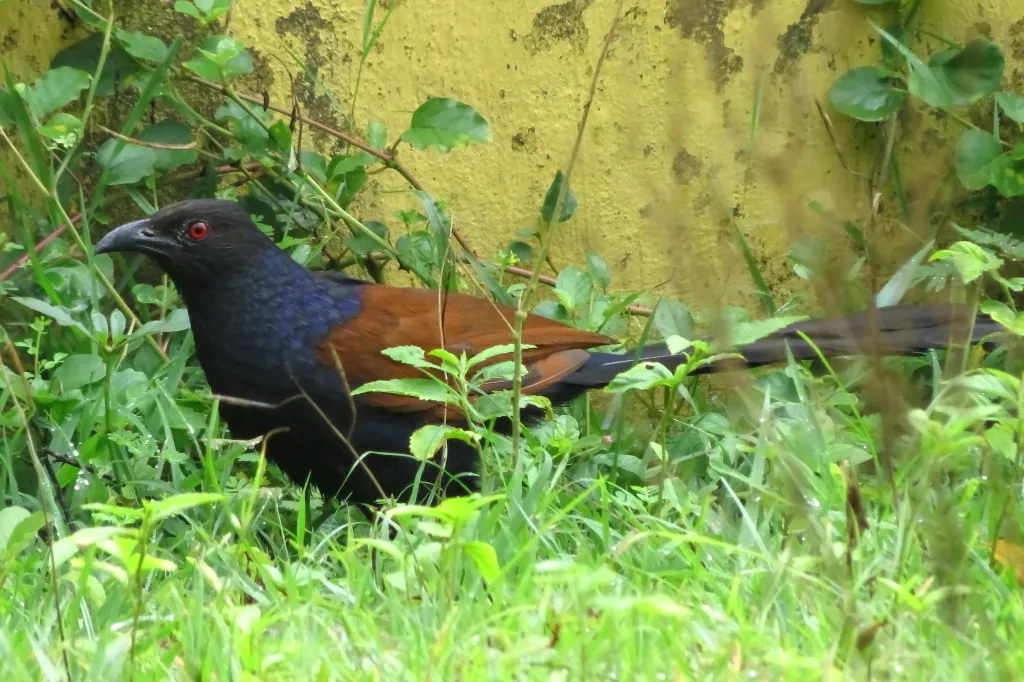
Description

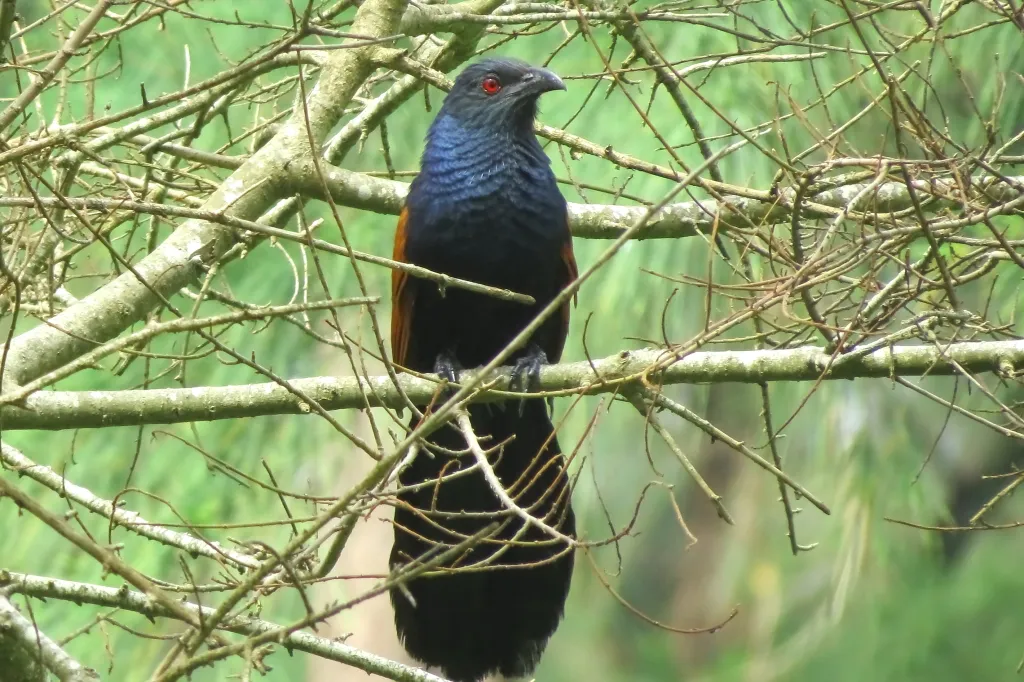
They are large, crow-like with a long tail and coppery brown wings.
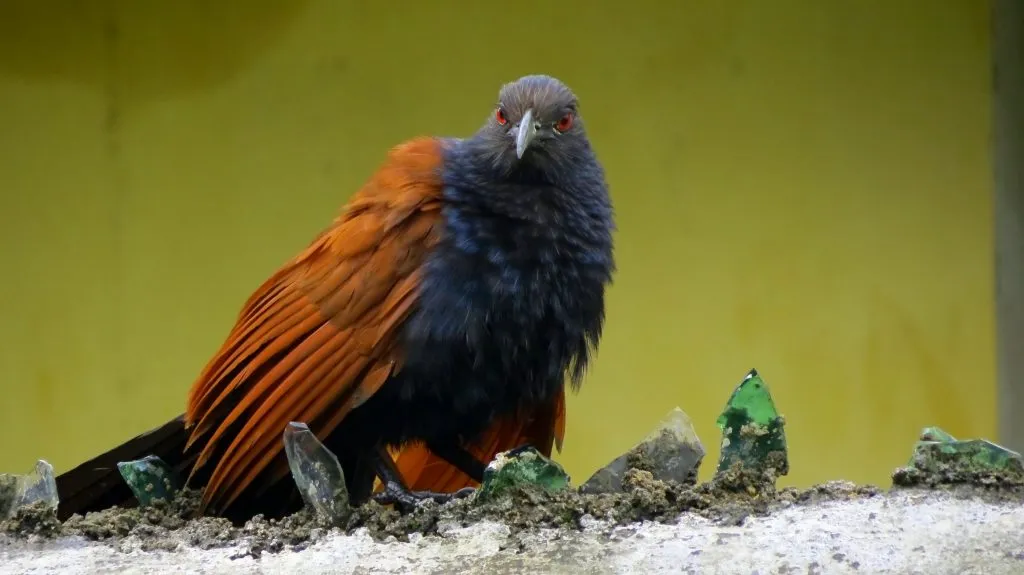
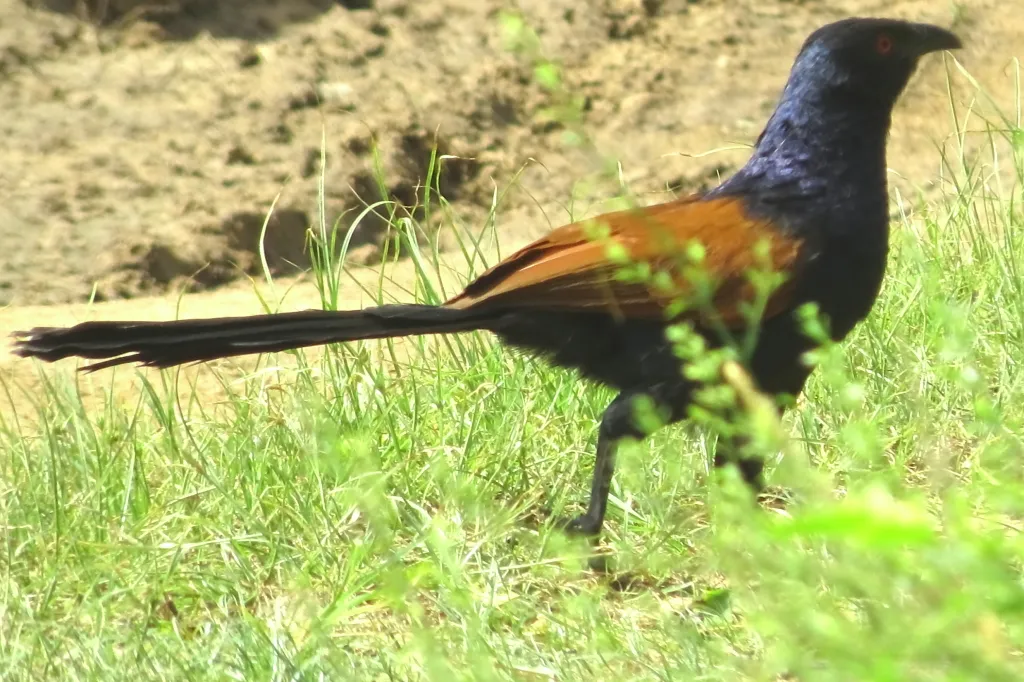
The head is black, upper mantle and underside are black glossed with purple.

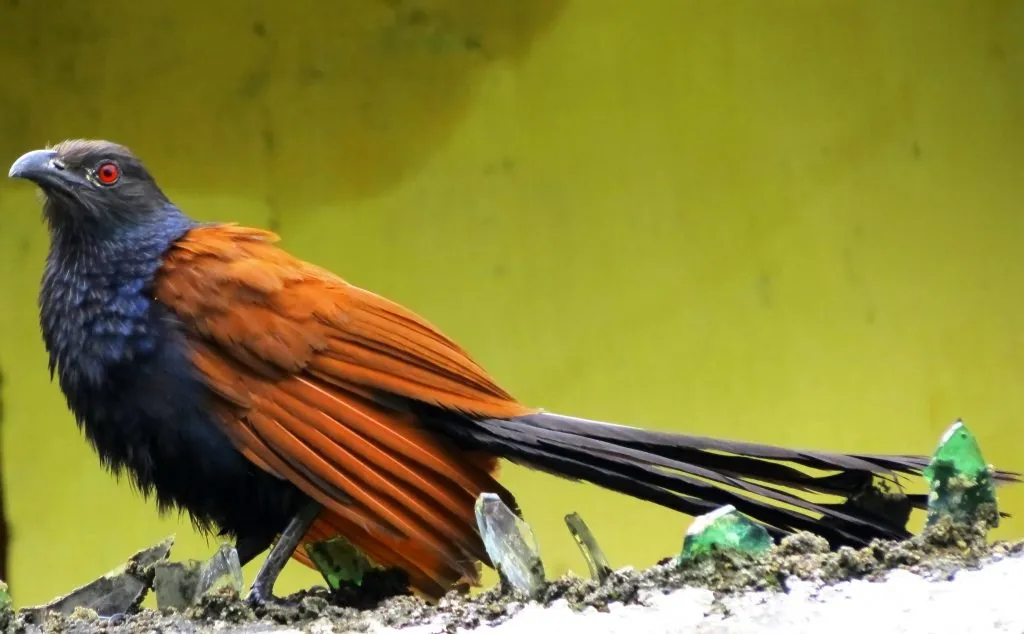
The back and wings are chestnut brown. There are no pale shaft streaks on the coverts. The eyes are ruby red.
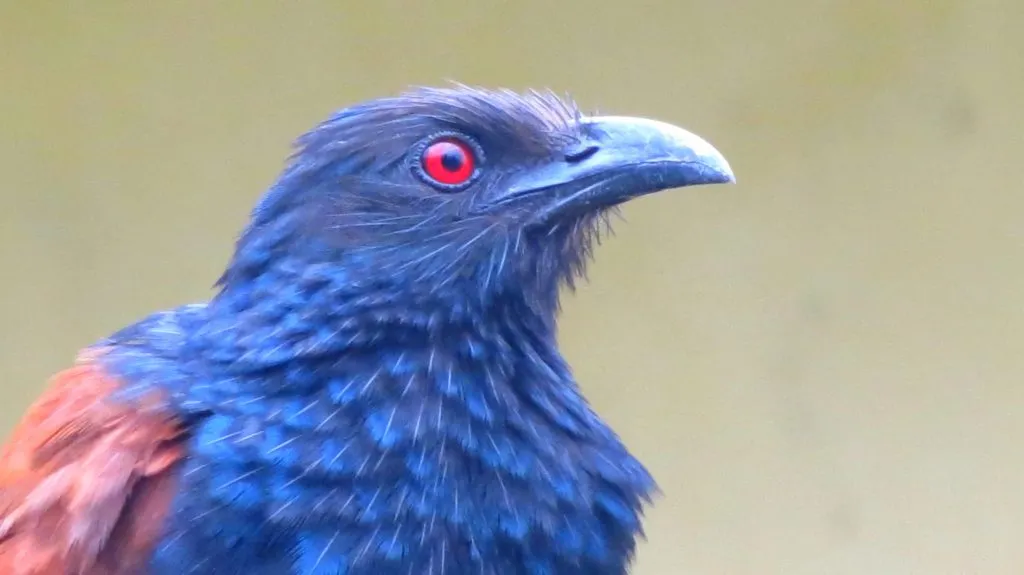
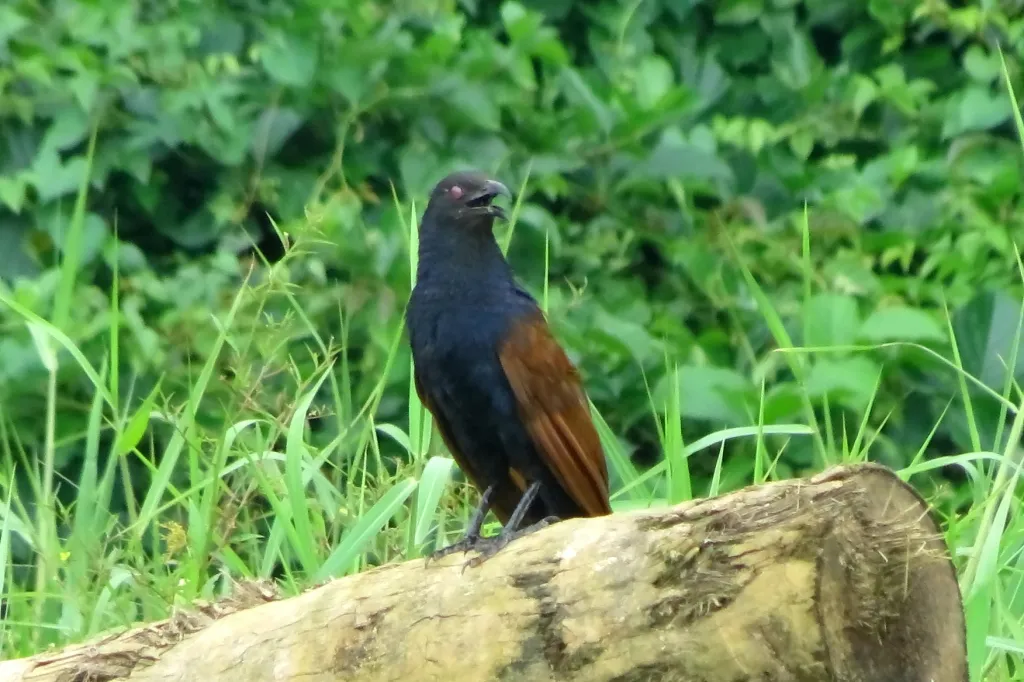
Juveniles are duller black with spots on the crown and there are whitish bars on the underside and tail. Sexes are similar in plumage, but females are larger than males.
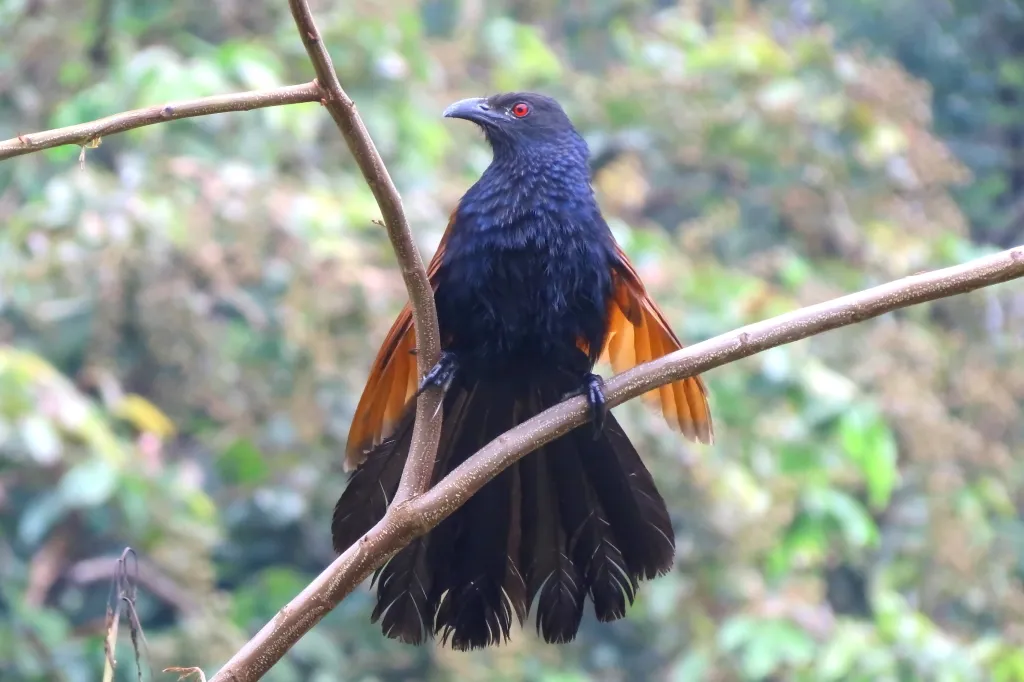
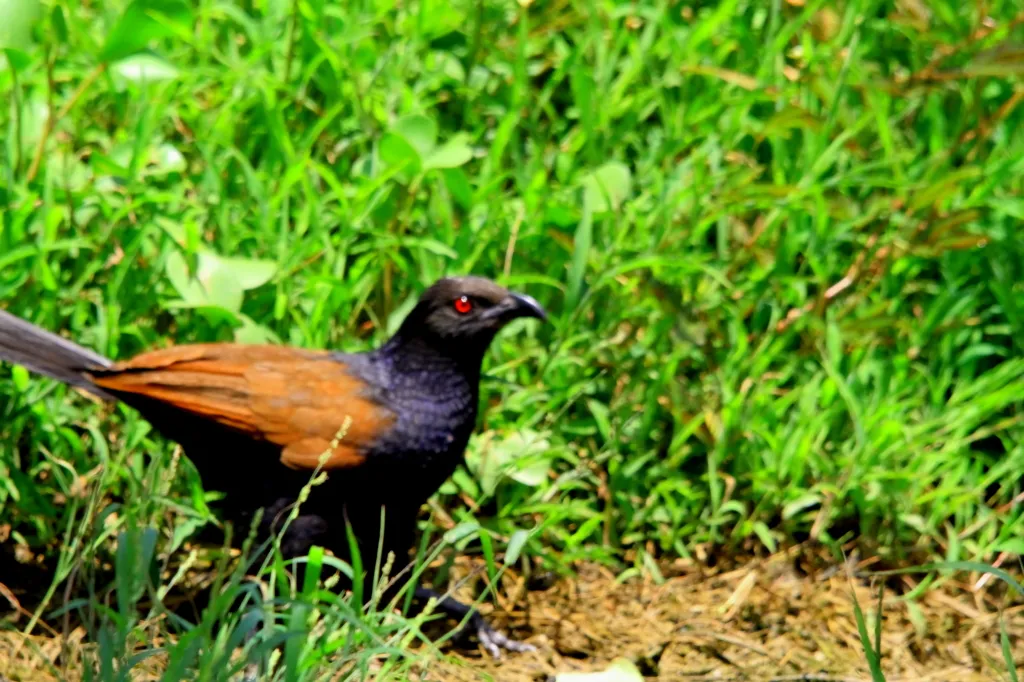
Distribution/Range
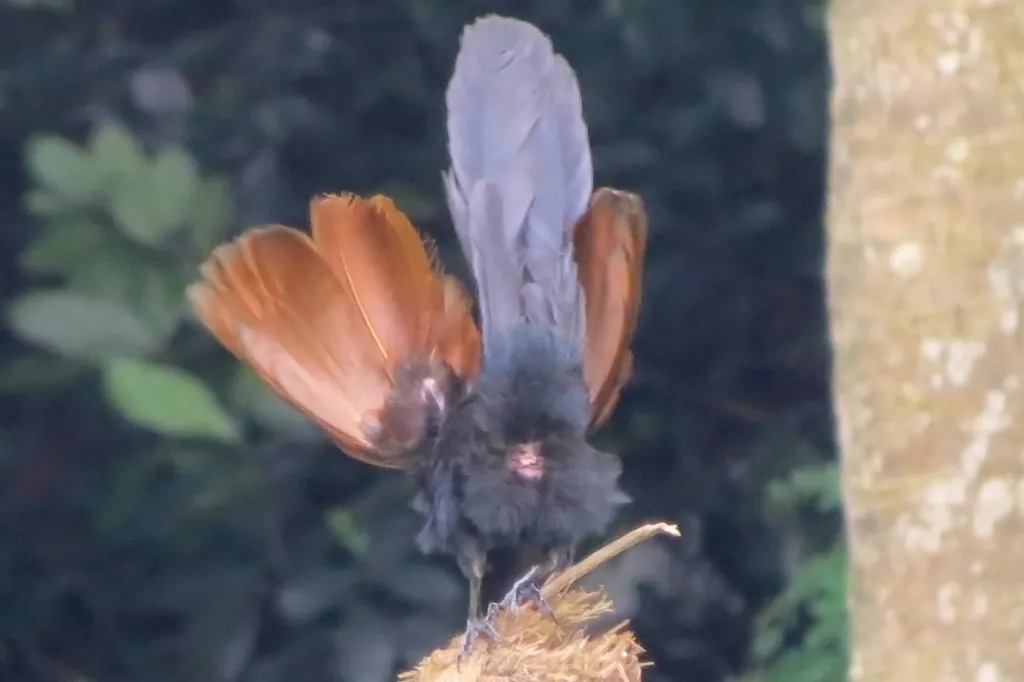
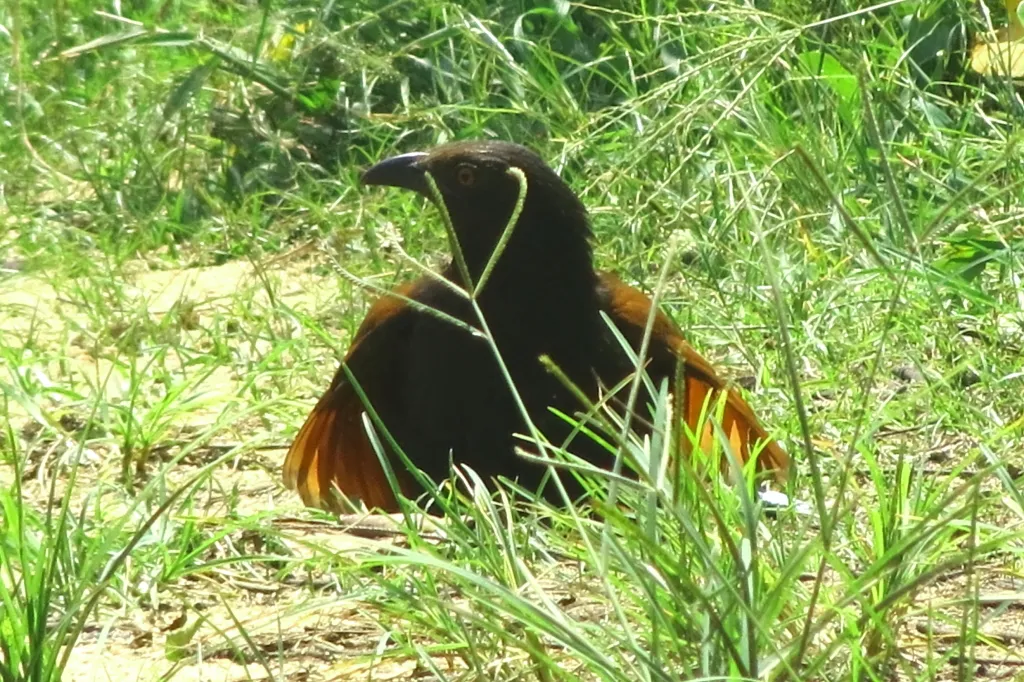
A widespread (non-migratory) resident in Asia, from India, East to South China, Nepal and Indonesia.
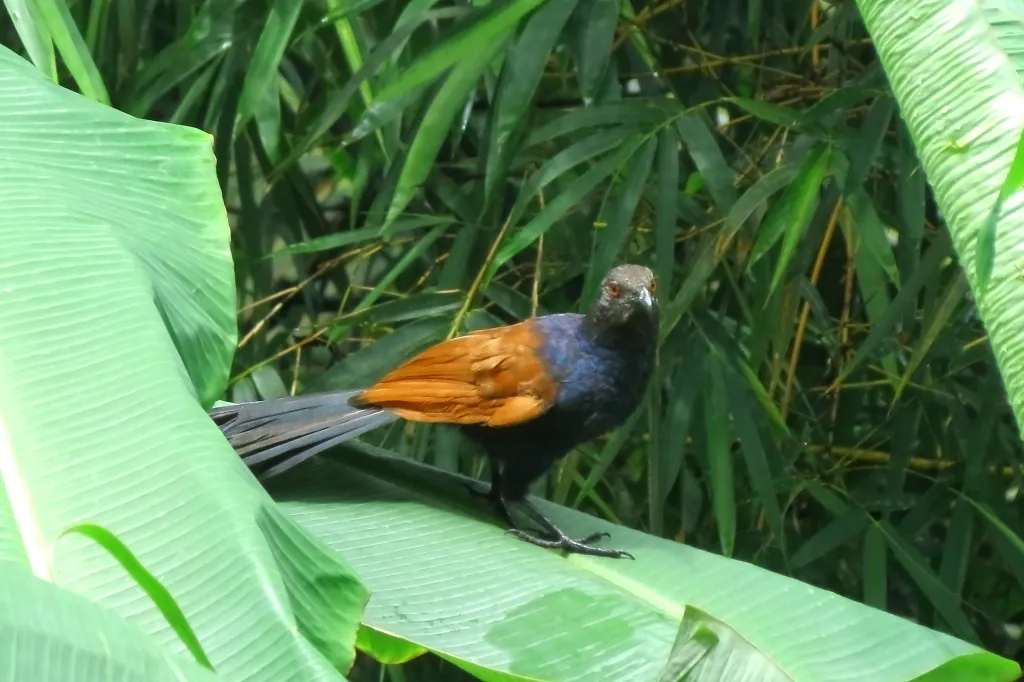
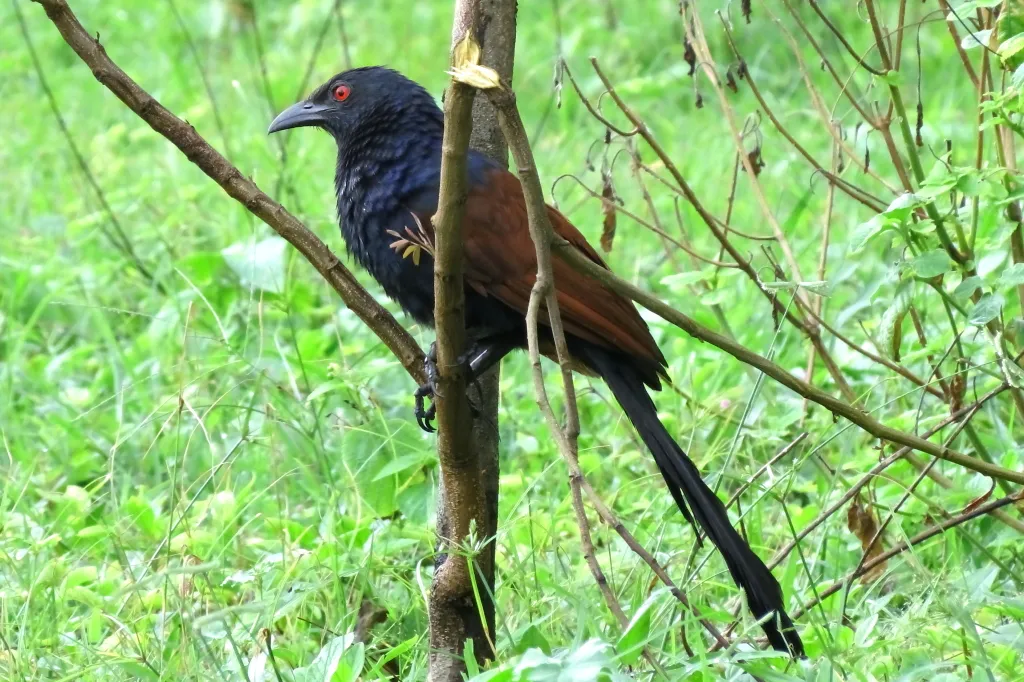
It is easy to spot the bird at the break of dawn or late in the evenings.
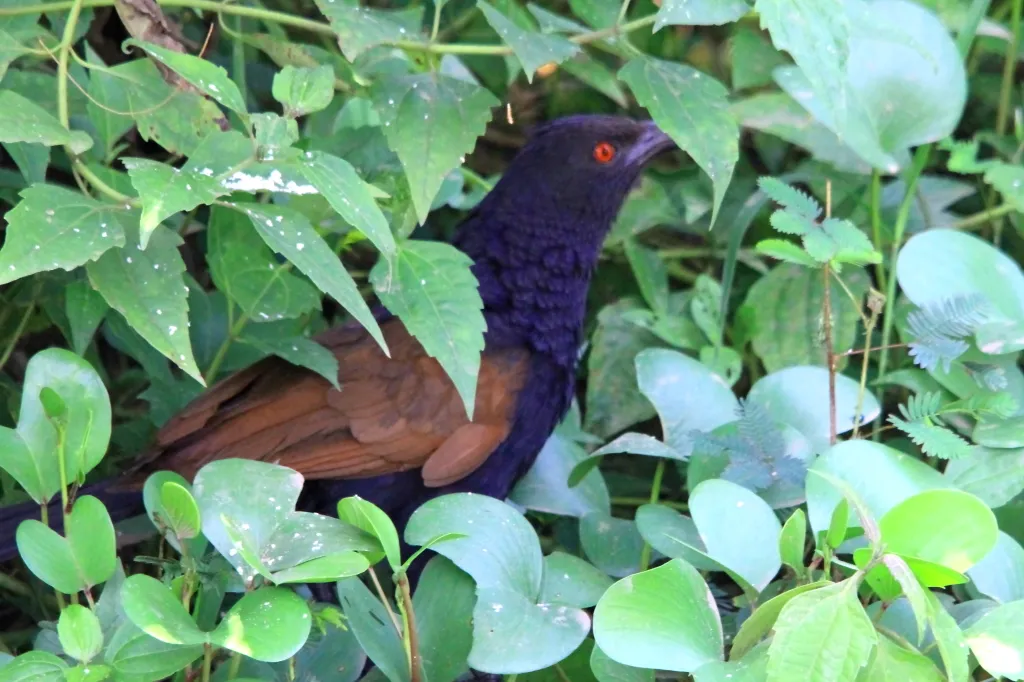

Descriptive notes
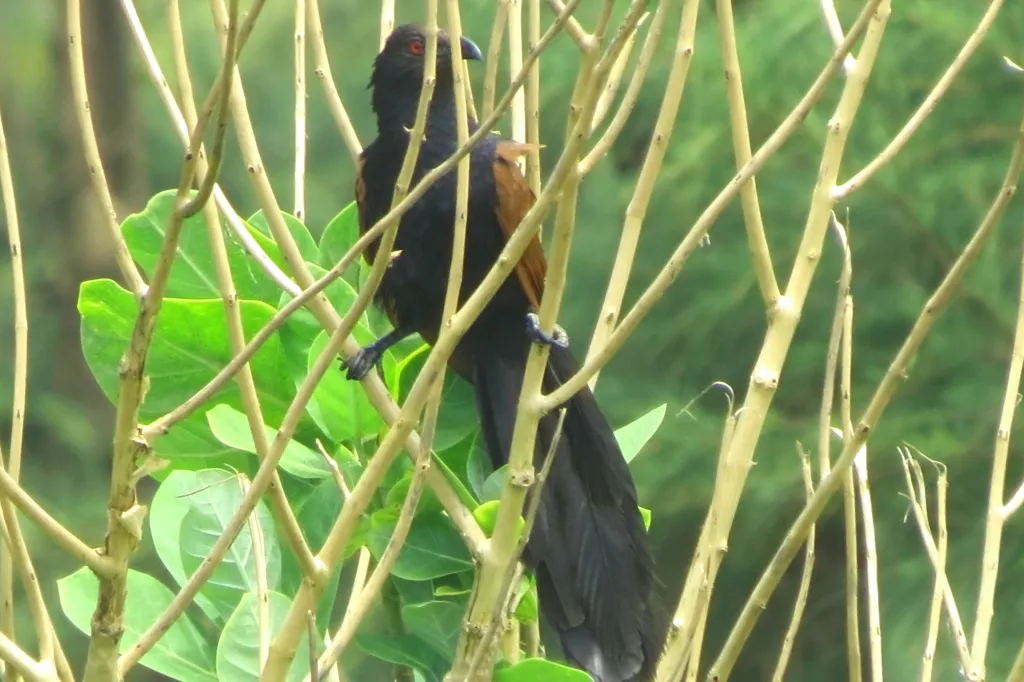
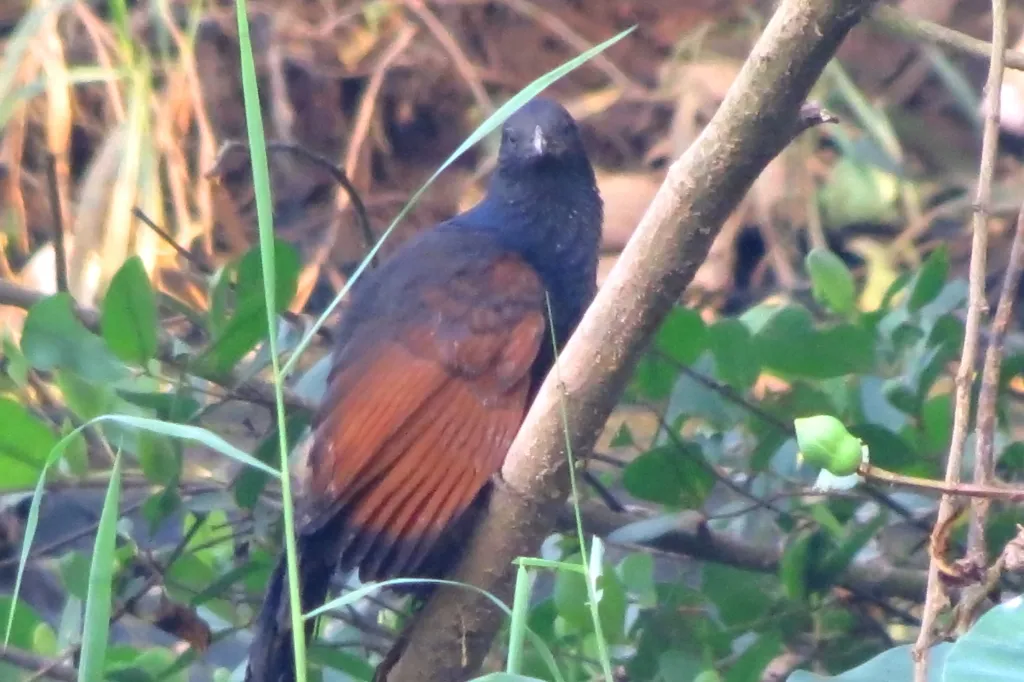
They are weak fliers, and are often seen clambering about in vegetation or walking on the ground as they forage for insects, eggs and nestlings of other birds.
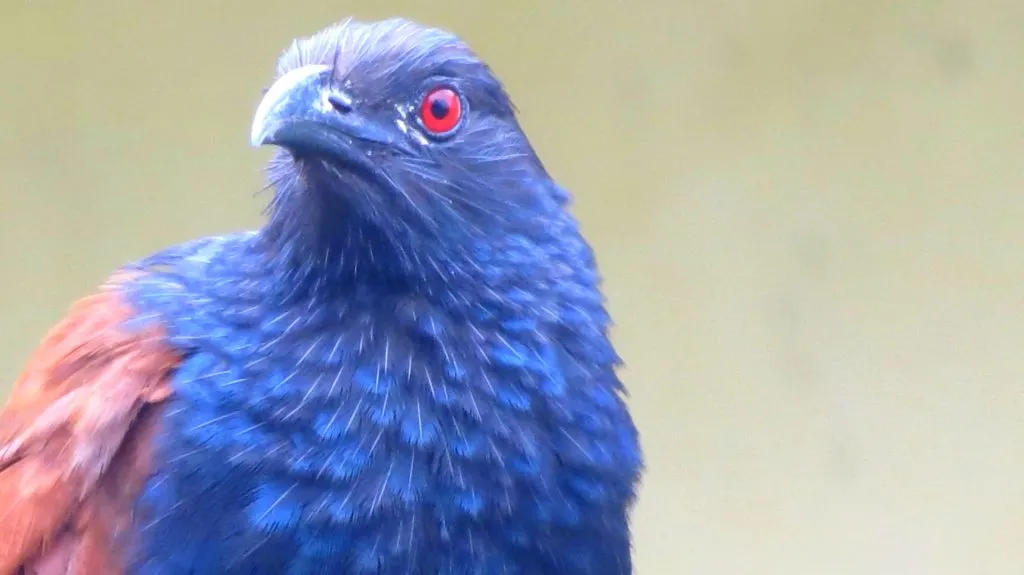
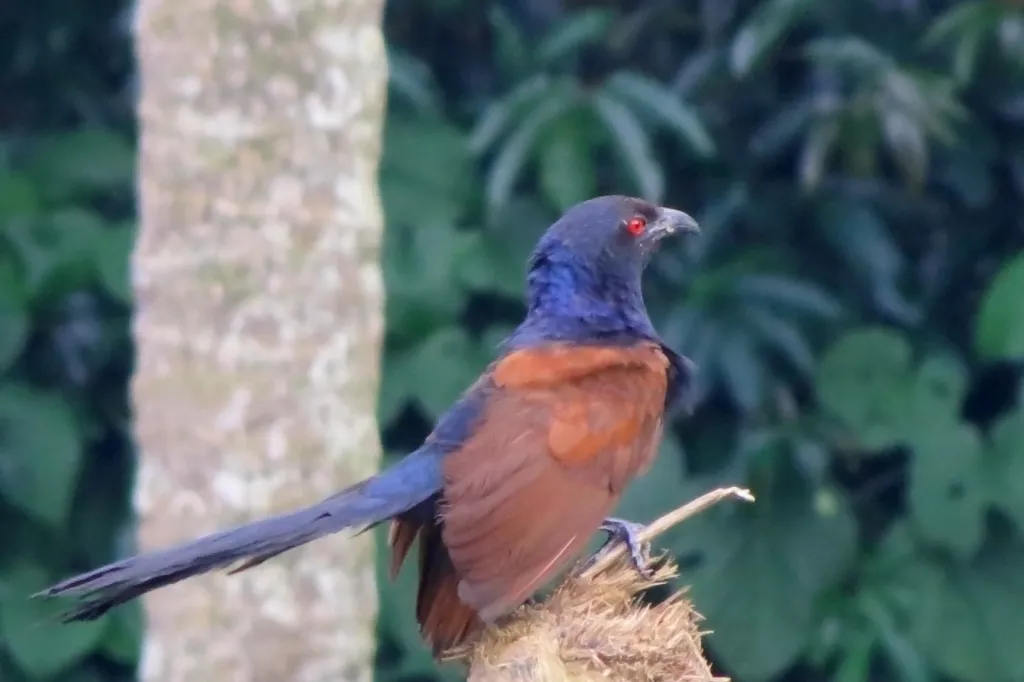
Scientific Classification
Kingdom
Animalia
Phylum
Chordata
Class
Aves
Order
Cuculiformes
Family
Cuculidae
Genus
Centropus
species
- sinensis
Binomial name
Centropus sinensis
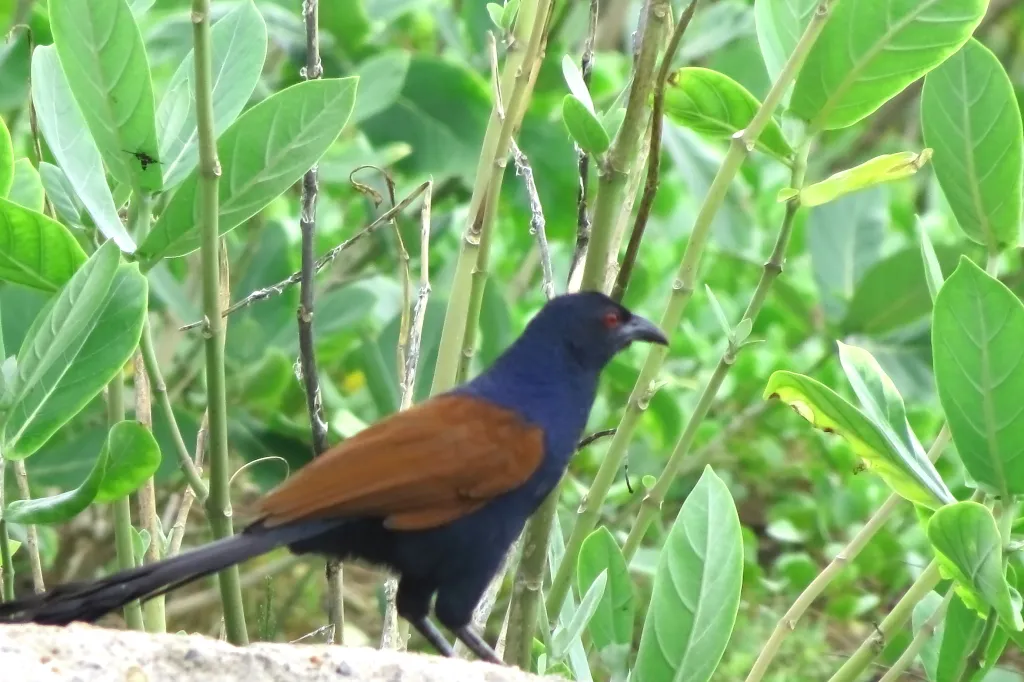
Habitat
Found in wide range of coffee habitats from jungle to cultivation and urban gardens.
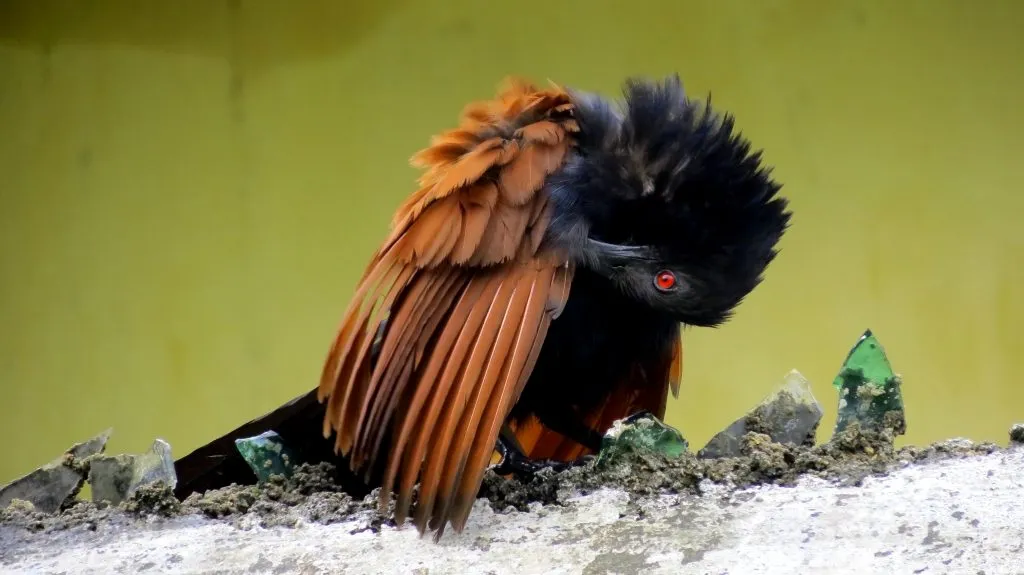
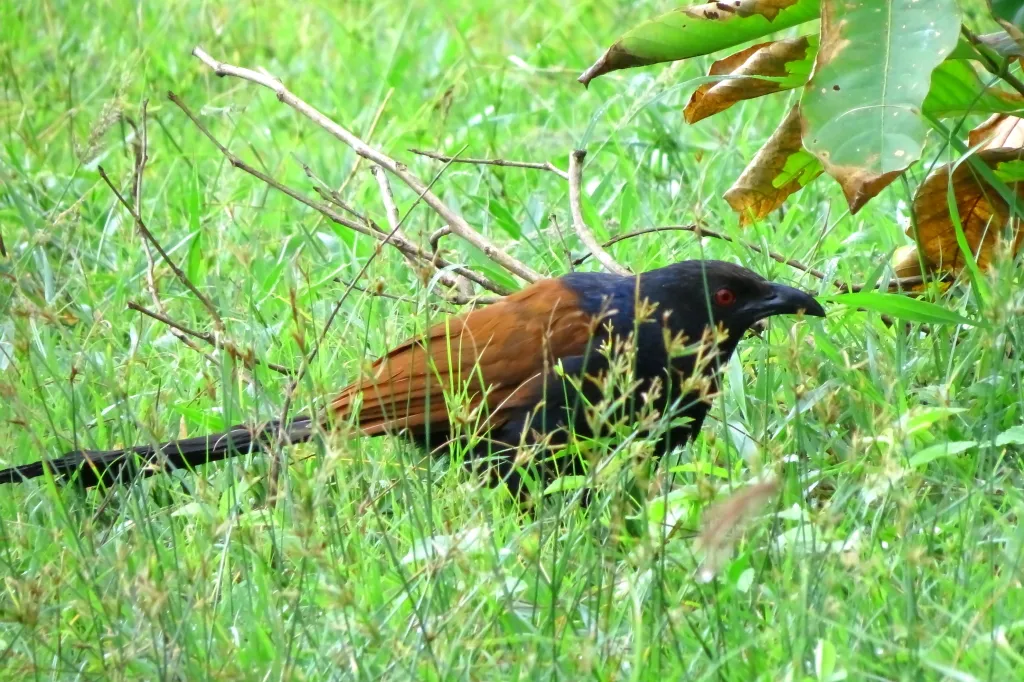
Especially common in places like bamboo thickets.
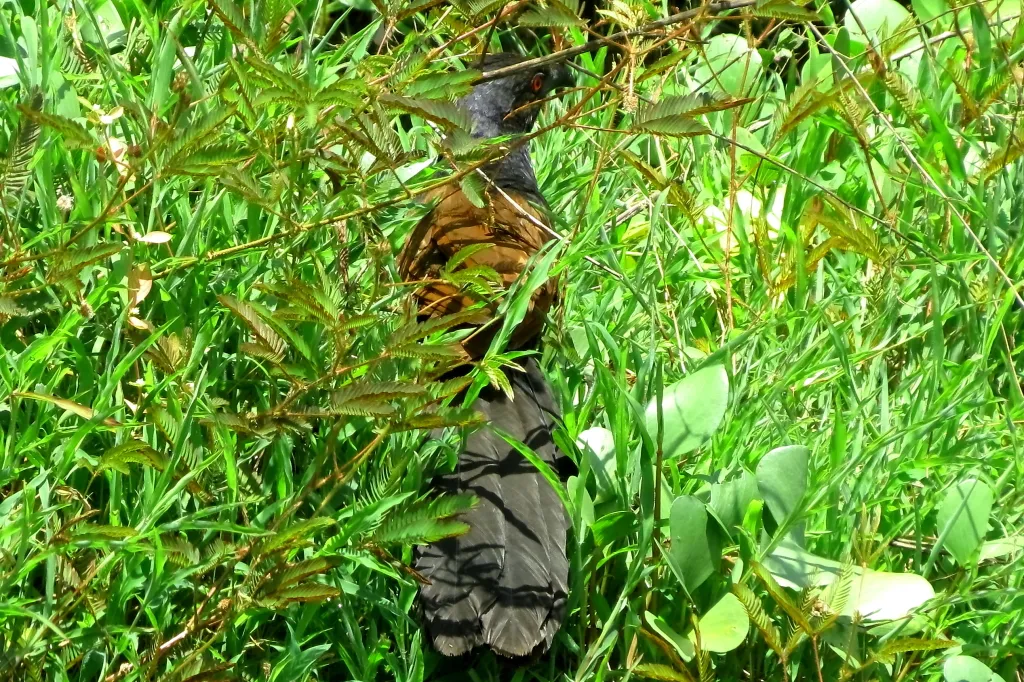
Behaviour
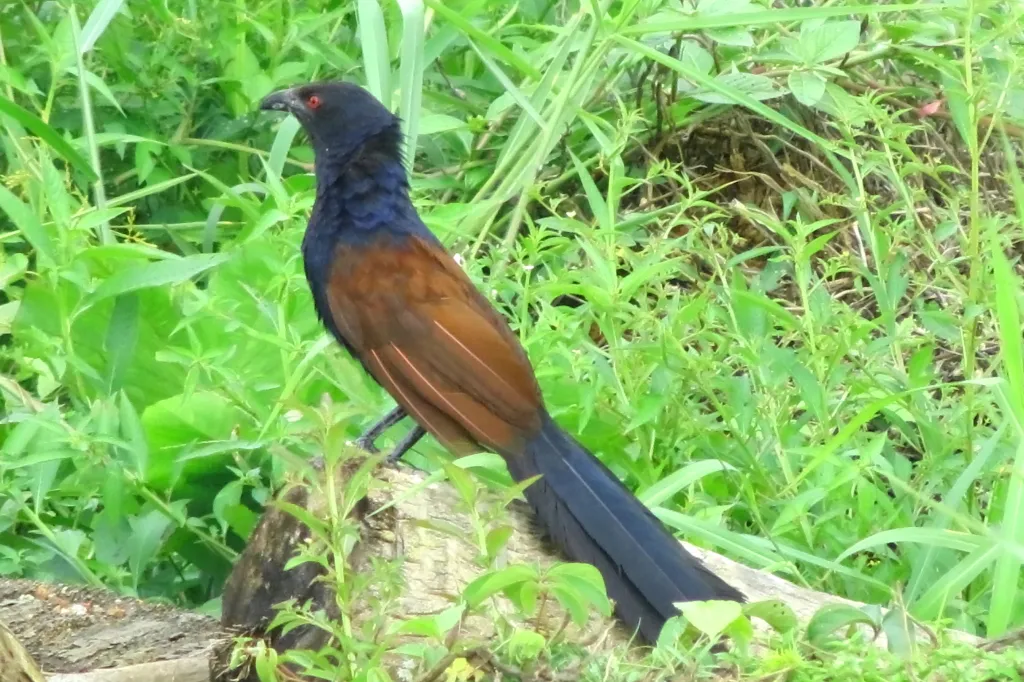
The crow pheasant has a very distinctive call and can be heard at all hours of the day.
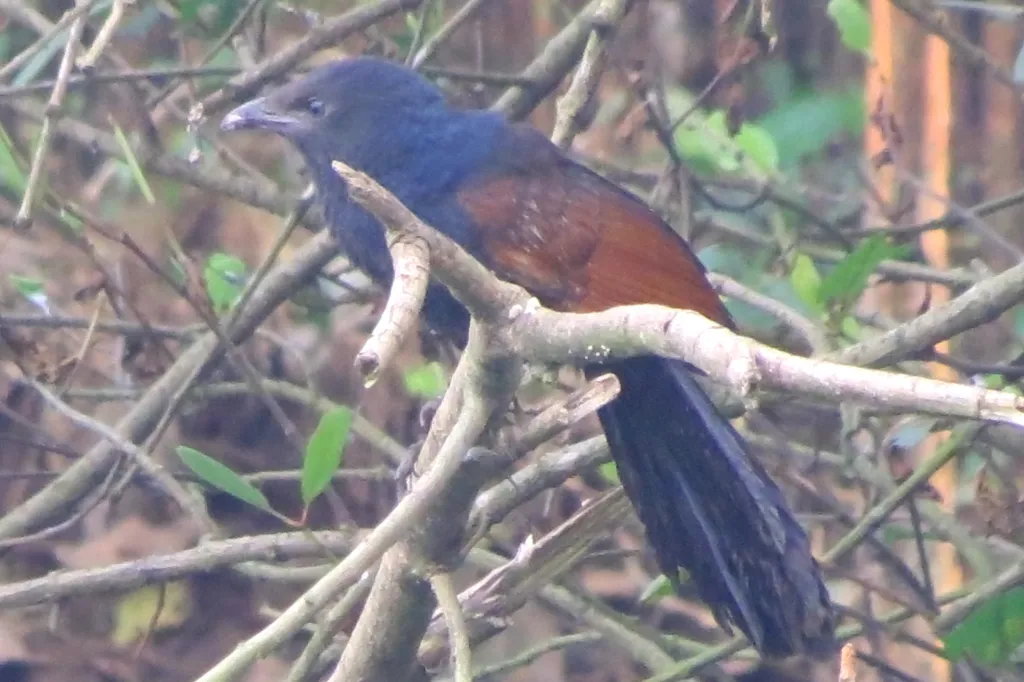
At times two birds synchronize their call and the entire coffee forest resonates with the call.
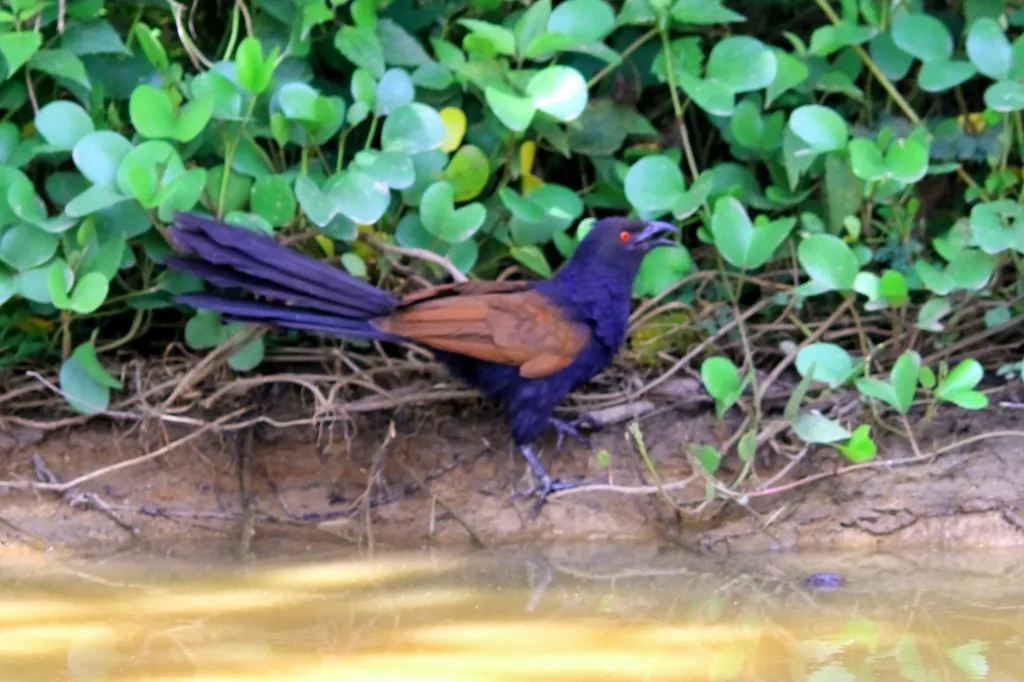
Generally they are seen in pairs but are highly territorial. They sunbathe in the early mornings singly or in pairs on the top of vegetation with their wings spread out.
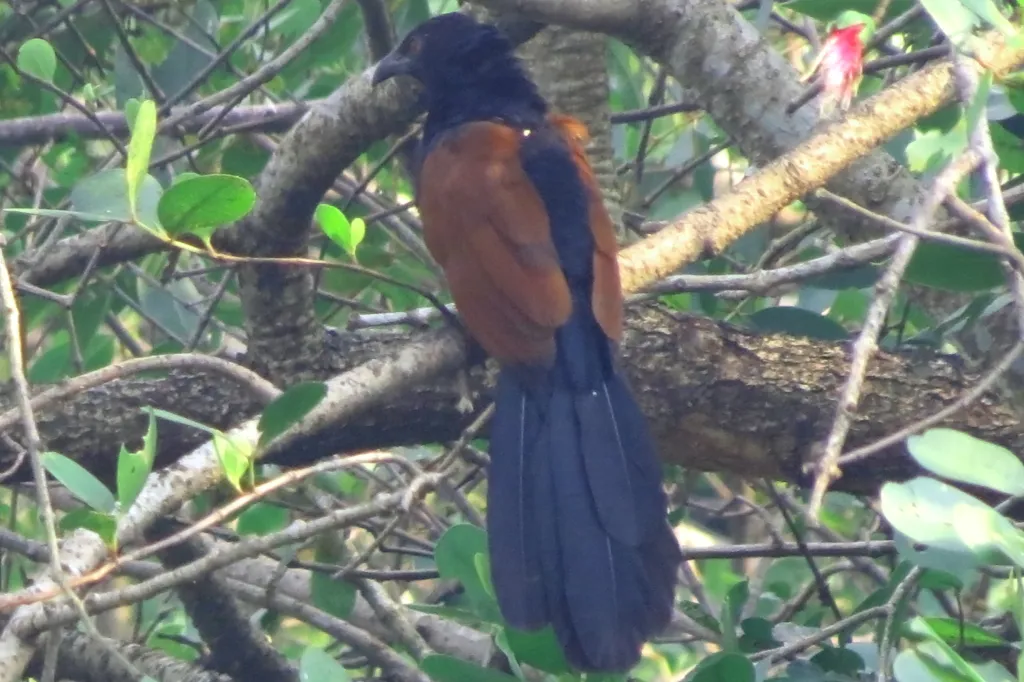
The territory of a nesting pair has been found in southern India to be 0.9 to 7.2 ha. They are most active in the warm hours of the morning and in the late afternoon.
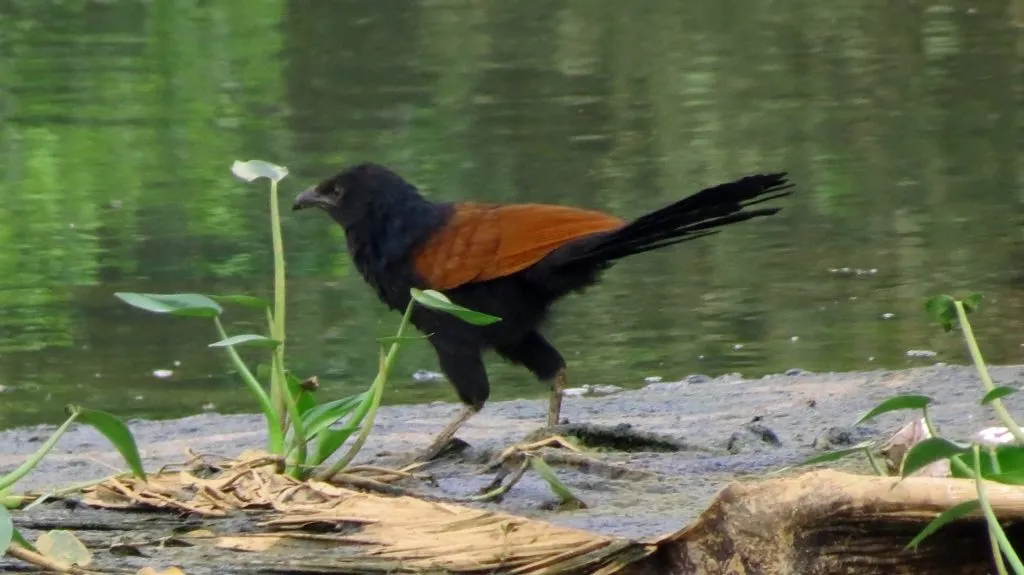
Diet
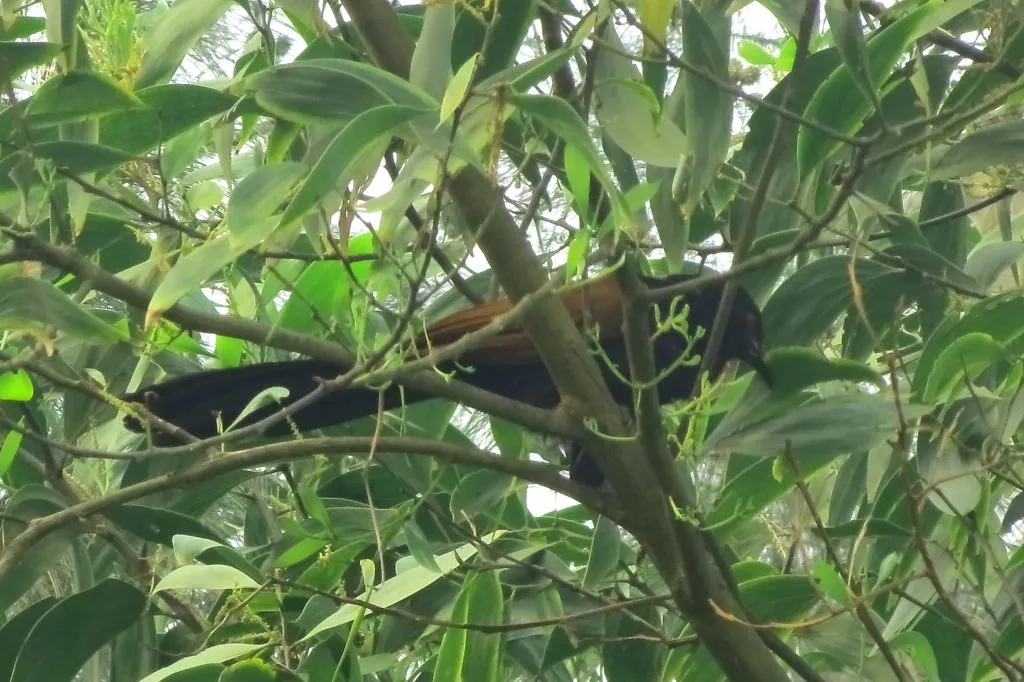
The choice of food of the crow pheasant is its strength.
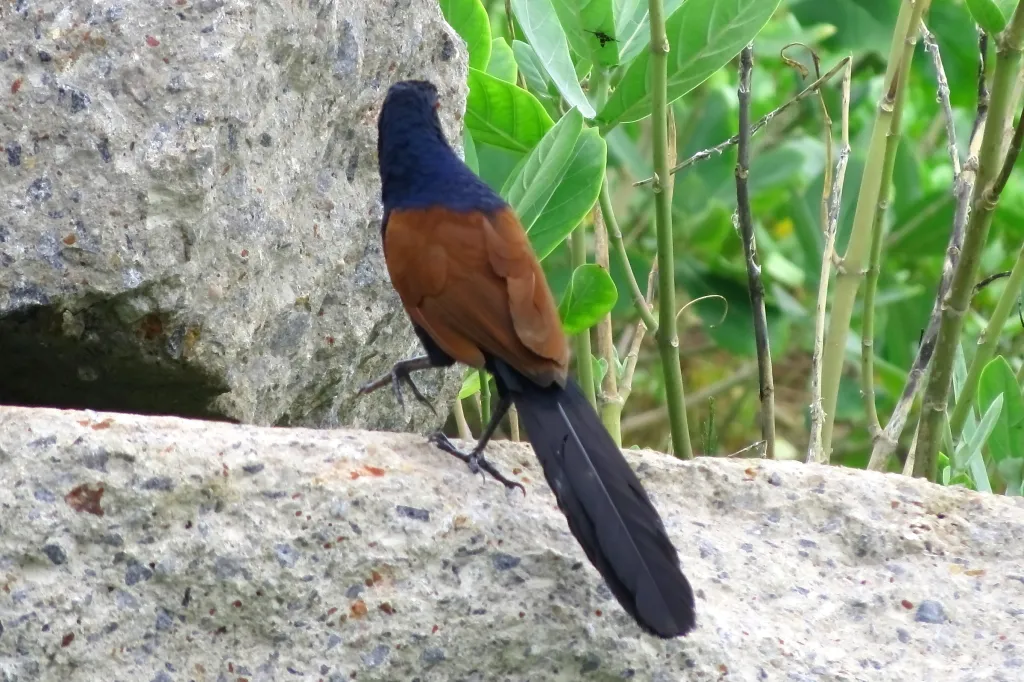
The diet includes Insects, caterpillars, moths, larvae, small reptiles, eggs of small birds, snails, Frogs, grasshoppers, beetles.
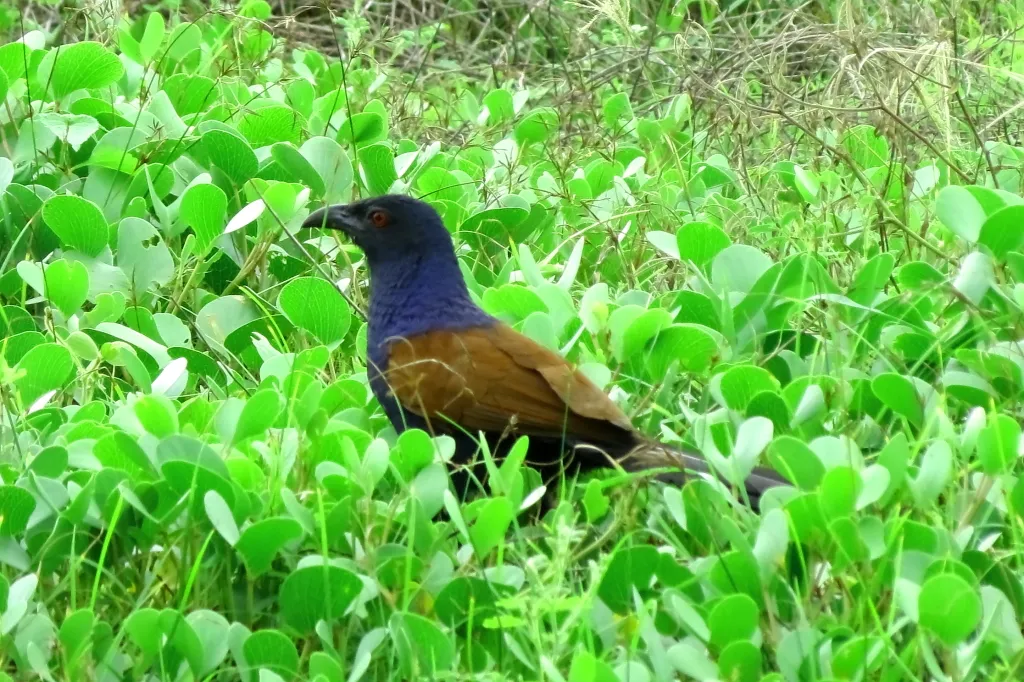
Breeding
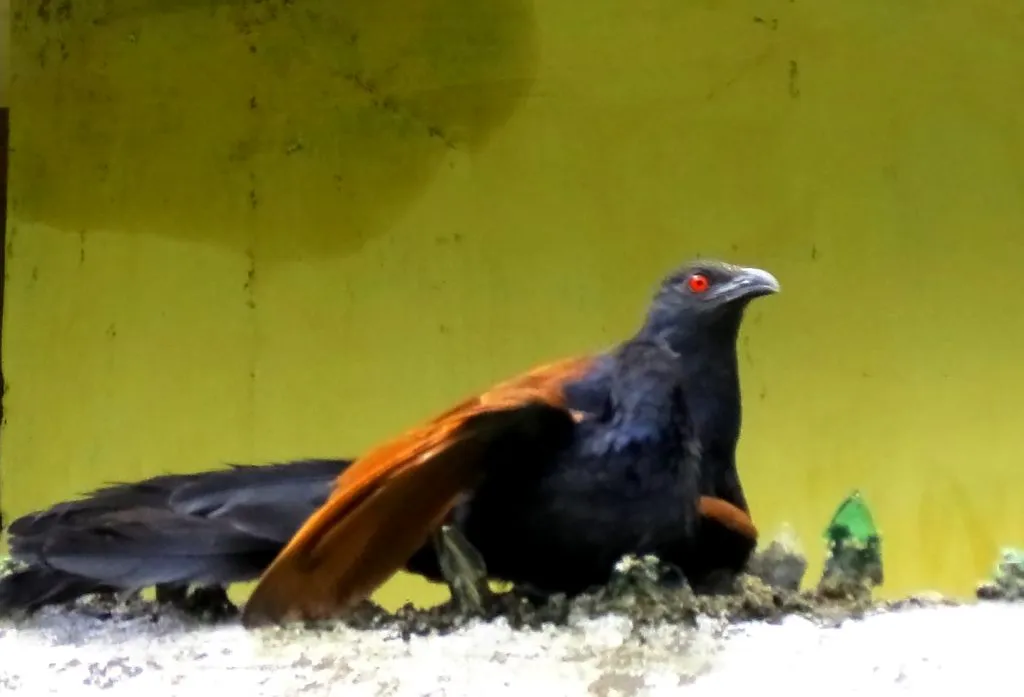
The Indian Crow Pheasant build their own nests. It is usually situated in the midst of some impenetrable thicket. The breeding season is after the monsoon in southern India but varies in other parts of its range but chiefly June to September.

Greater coucals are monogamous, and the courtship display involves chases on the ground and the male brings food gifts for the female.
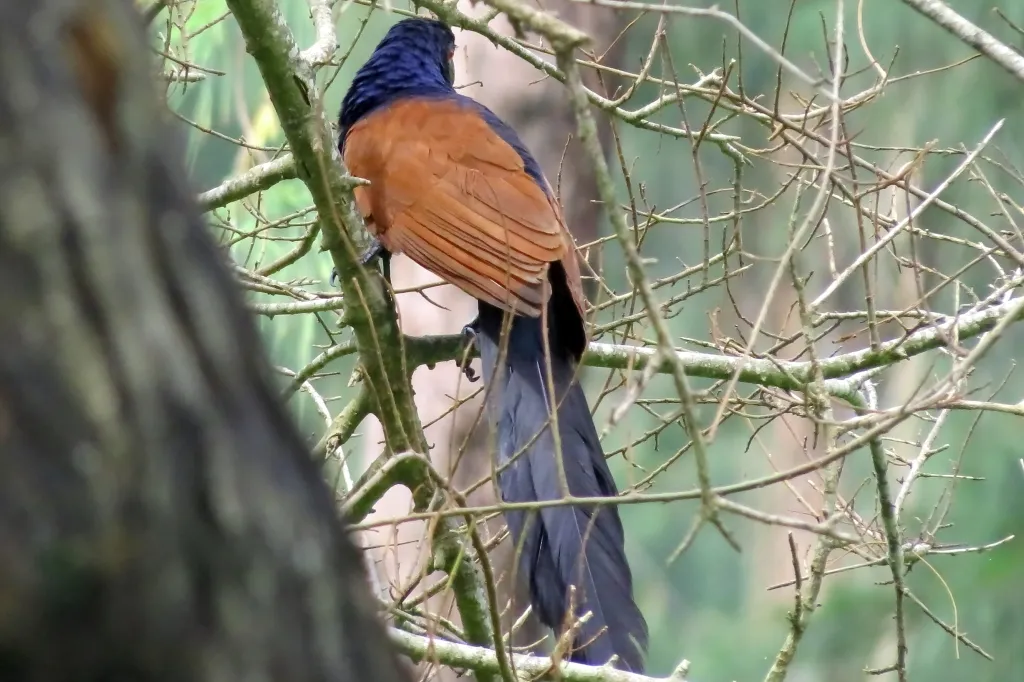
The female lowers her tail and droops her wings to signal acceptance.
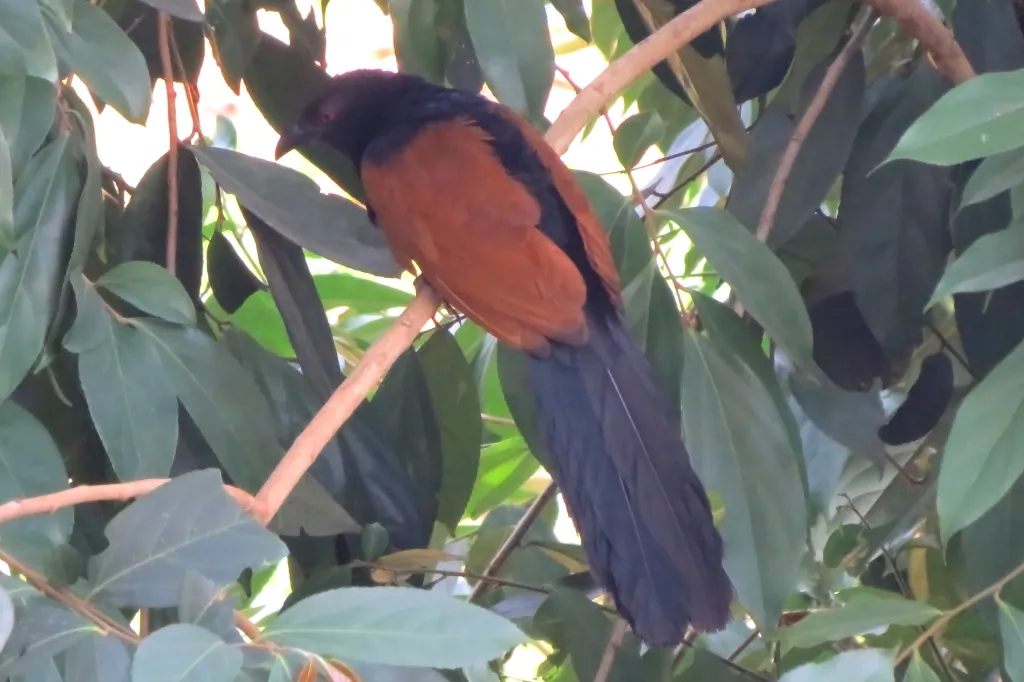
Nesting
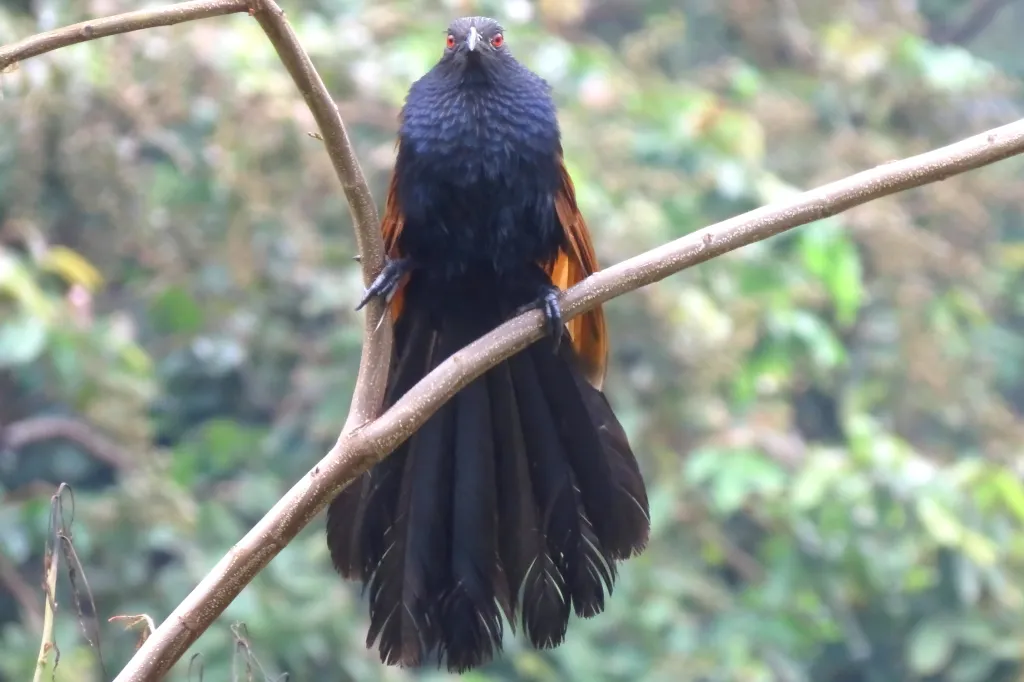
The nest is built mostly by the male over about three to eight days. The nest is a deep cup with a dome in dense vegetation inside tangles of creepers, bamboo clump or Pandanus crowns.
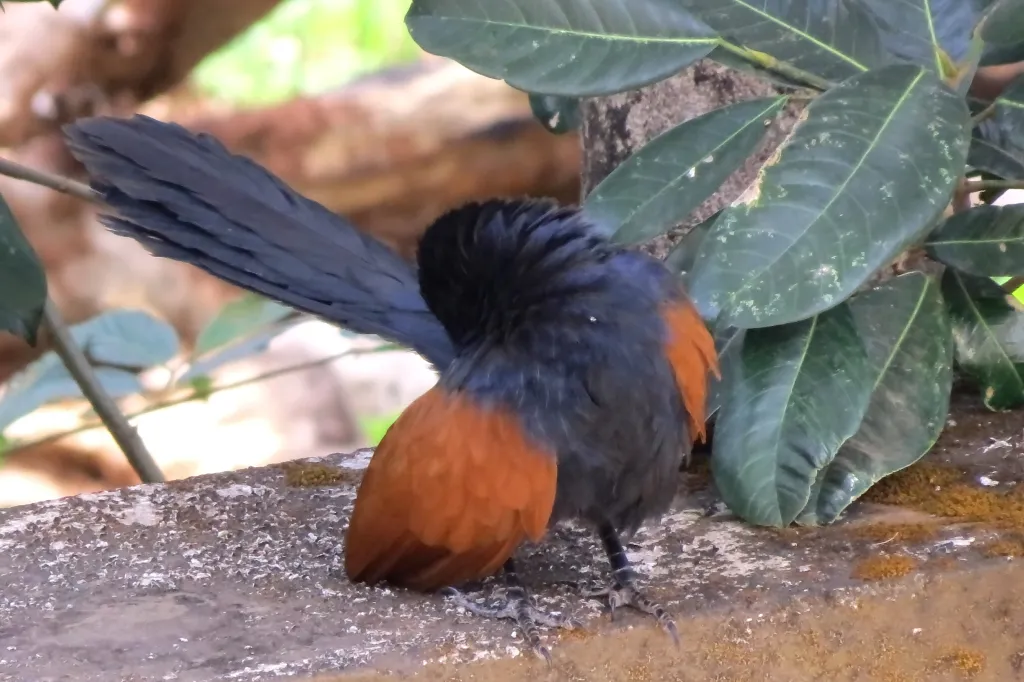
They can be built as high as 6m above the ground and the typical clutch is 3–5 eggs. The eggs (of size 36–28 mm weighing 14.8 g ) are chalky white with a yellow glaze when laid that wears off.
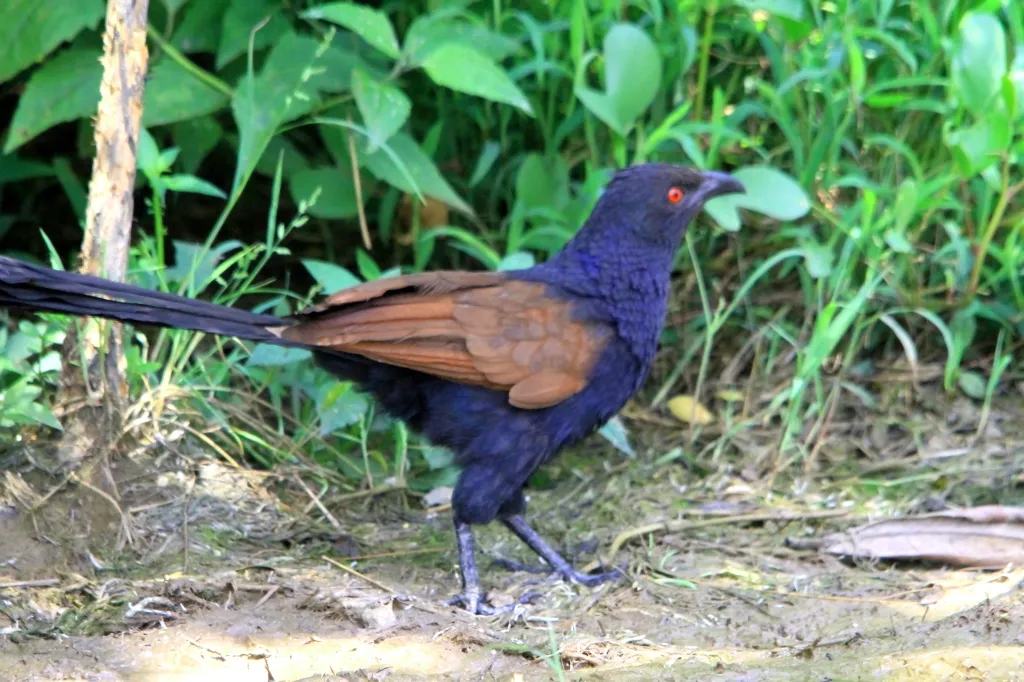
Both the male and the female take part in nest building. They lay 2 to 4 eggs that hatch after 15–16 days of incubation. The chicks take 18–22 days to fledge.
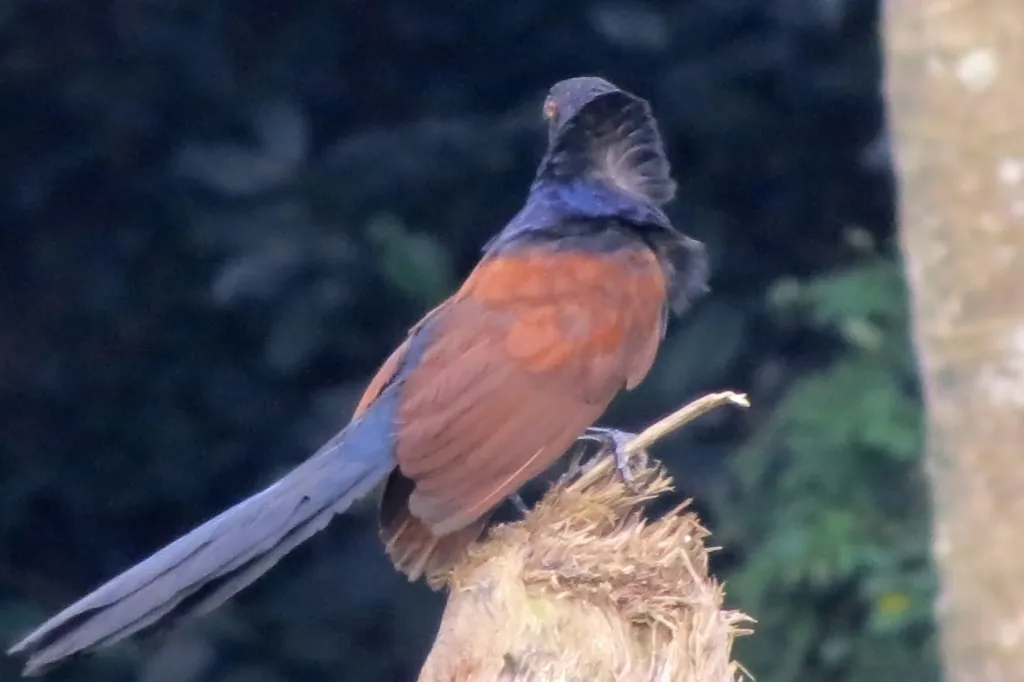
Conservation Status
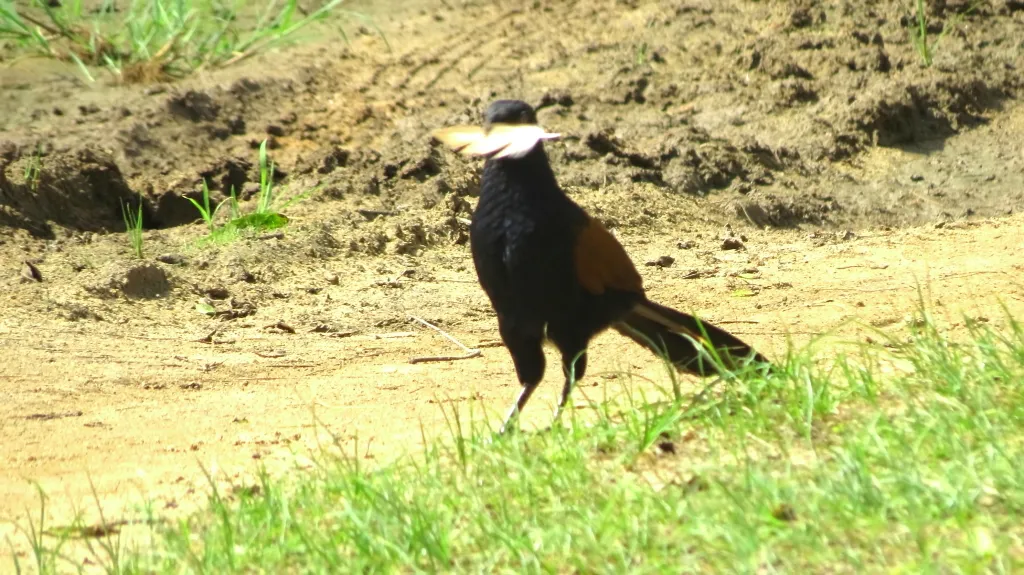 Not globally threatened.
Not globally threatened.
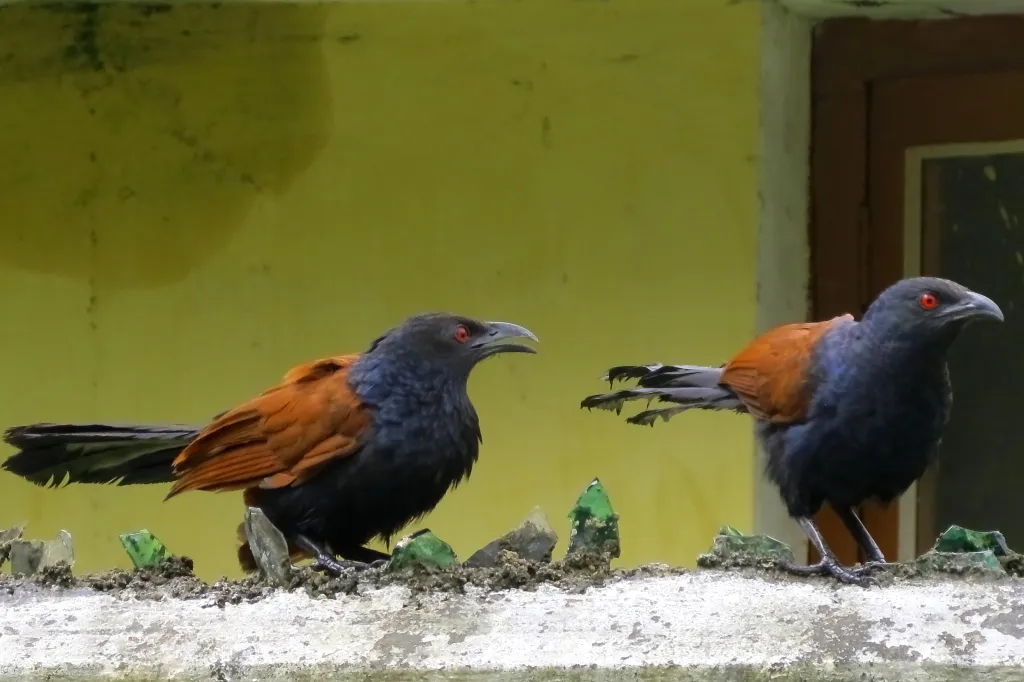
Conclusion
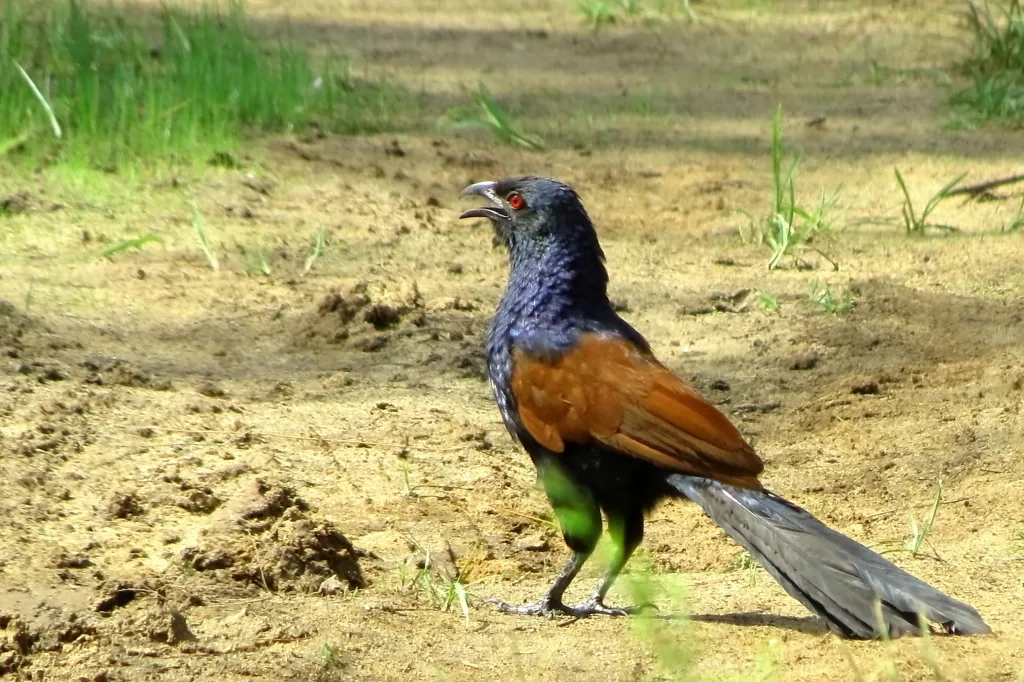
Today we have come to realize that, if we want to preserve the integrity of the coffee forests, we have to not only preserve the very many species both discovered and undiscovered, but we have to preserve the entire community comprising the flora and fauna of the coffee forests.
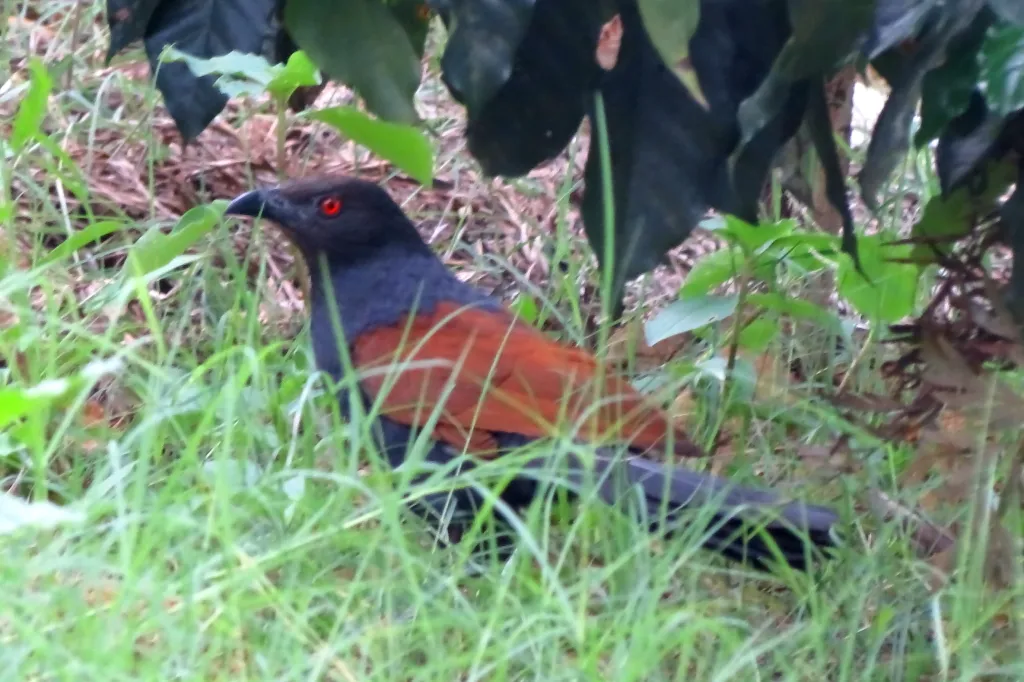
References
Anand T Pereira and Geeta N Pereira. 2009. Shade Grown Ecofriendly Indian Coffee. Volume-1.
Bopanna, P.T. 2011.The Romance of Indian Coffee. Prism Books ltd.
http://en.wikipedia.org/wiki/Greater_coucal